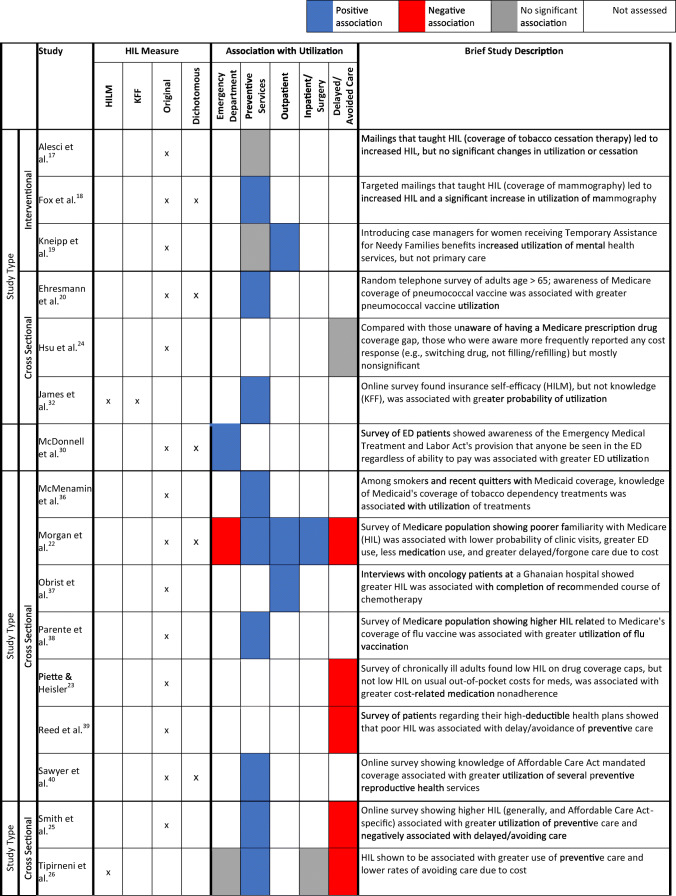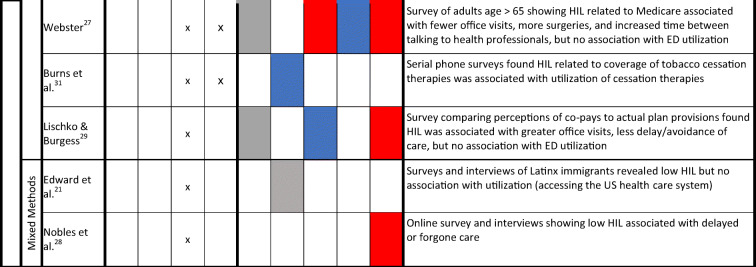Table 1.
Patterns of Association Between Health Insurance Literacy and Utilization
Abbreviations: HIL, health insurance literacy; ED, emergency department; HILM, Health Insurance Literacy Measure, a subjective measure of confidence in health insurance decision-making; KFF, Kaiser Family Foundation objective measure of health insurance knowledge
The 21 included studies are sorted by study type. The method of assessing HIL is denoted by Xs in the relevant cells. Dichotomous measures include assessments of HIL that asked a yes/no question about objective HIL knowledge or grouped respondents into high HIL/low HIL groups for analysis. Utilization measures were grouped into 5 categories: ED; preventive services (including primary care outpatient visits and use of specific services such as cancer screening, vaccinations, and tobacco cessation treatment); outpatient care (including subspecialty clinic visits and urgent visits); inpatient and surgical care, which were grouped together because of their higher costs and a paucity of studies; and delayed or avoidance of care
Legend: Blue = higher levels of HIL associated with increased utilization of the outcome measure; Red = higher levels of HIL associated with decreased utilization of the outcome measure (i.e., HIL is associated with fewer delays or avoidance of care, including medication use); Grey = no significant association between HIL and the outcome measure; White = association between HIL and the outcome measure was not assessed


